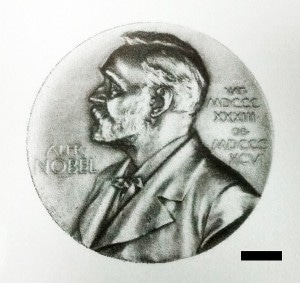Feb 1 2017
 (Credit: The University of Manchester )
(Credit: The University of Manchester )
A research team from The University of Manchester have developed a technique of developing water-based and inkjet printable 2D material inks, which could enable 2D crystal heterostructures to be moved from the laboratory into real-world products.
In partnership with the University of Pisa, examples such as smart light detectors, and devices that can store data encoded in binary form have been shown.
Graphene is the first 2D material in the world, which is lightweight yet 200 times stronger than steel. It is also flexible and more conductive of copper. Since 2004 when graphene was isolated, the family of 2D materials has increased.
Similar to stacking Lego bricks in a precisely chosen sequence, known as “heterostructure”, graphene and other 2D materials can be used by researchers to layer these materials to produce devices customized for a specific use.
The research team was headed by Professor Cinzia Casiraghi and their findings have been reported in Nature Nanotechnology. The stable, concentrated, water-based and inkjet printable 2D material inks created by them can be applied for the fabrication of numerous heterostructures by fully exploiting the design flexibility provided by a simple method such as inkjet printing.
Existing ink formulations, which would allow heterostructures to be manufactured using simple and economical techniques, are far from ideal, as they either contain toxic solvents or require expensive and time-consuming processes. Additionally, none of these are optimized for heterostructure fabrication.
Due to the simplicity, flexibility and low cost of device fabrication, we envisage this technology to find potential in smart packaging applications, for example for pharmaceuticals and consumer goods. We are also very excited about the possibility of implementing logic circuits made of 2D materials – indeed, we are further developing these type of devices with our colleagues in Pisa.
Professor Cinzia Casiraghi, University of Manchester
Daryl McManus, PhD student said: “These inks provide a perfect platform to fully exploit the range of properties of 2D materials by allowing for the first time a precise and scalable method for fabrication of devices of arbitrary complexity utilising 2D materials".
Remarkably these inks are also biocompatible, which broadens their potential use to biomedical applications.
The engineering of water-soluble 2D inks that are compatible with the biological milieu and interact with organisms without harm can provide a platform of huge potential for a wide range of applications. We are certainly looking at this as the beginning for such inks in the biomedical arena.
Professor Kostas Kostarelos, University of Manchester